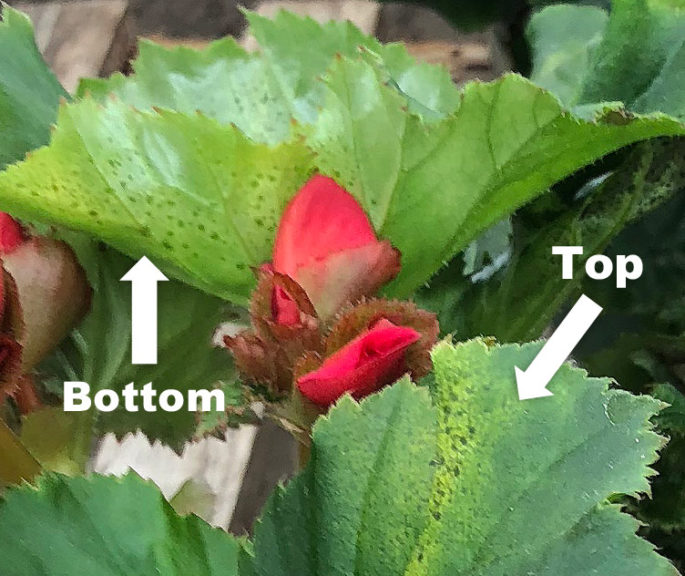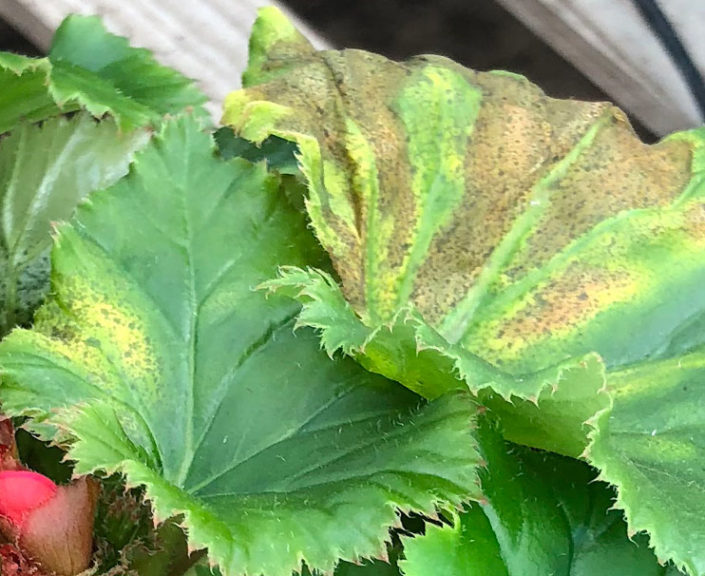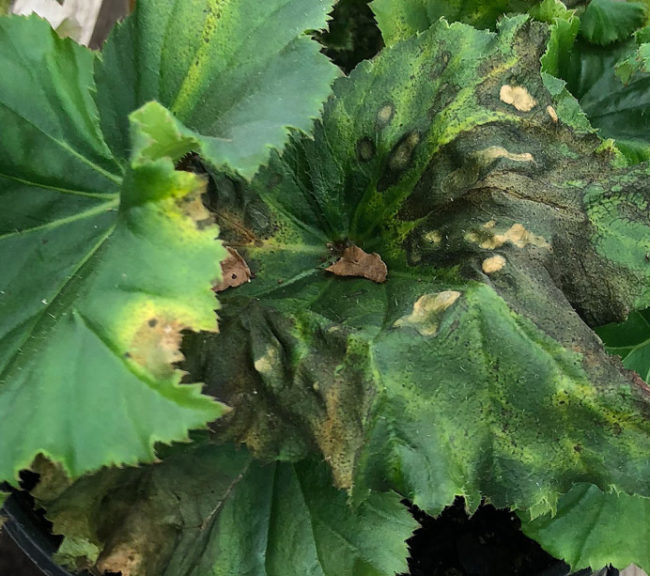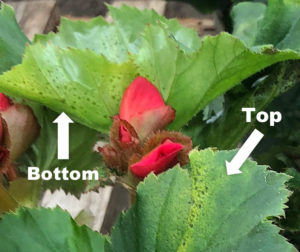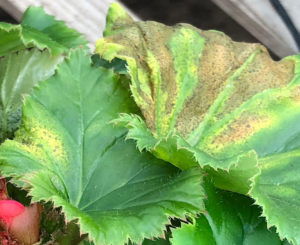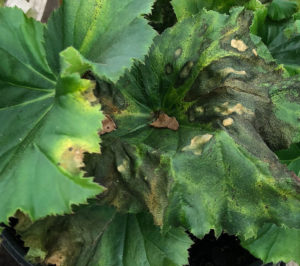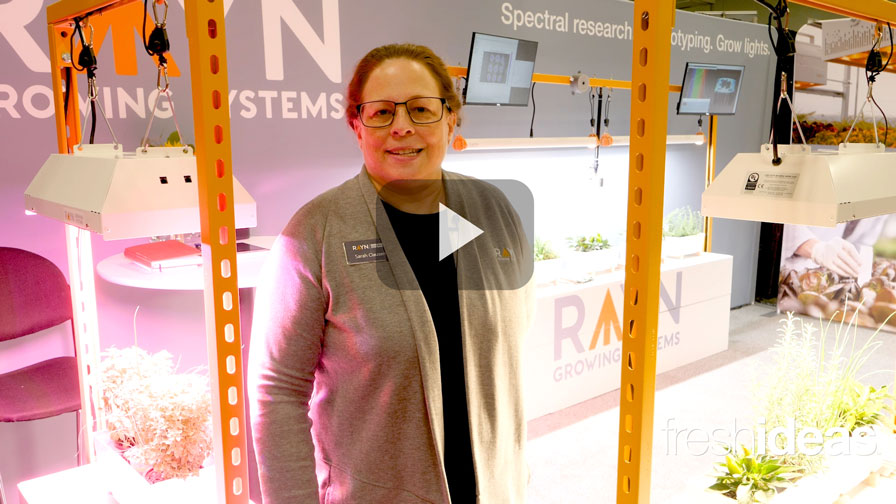Plantpeddler Provides Guidelines for Xanthomonas Bacterial Leaf Spot in Begonias
A leading producer of Begonia young plant liners and finished plants, Cresco, IA-based Plantpeddler has issued the following informational guidelines on Bacterial Leaf Spot in Begonias.
Xanthomonas is a genus of bacteria that infect many varieties of plants, causing spots and blights on leaves and stems. The strain Xanthomonas axonopodis pv.begoniae is specific to Begonias, and does not spread to other plant genera. Begonias of all species are vulnerable.
With early detection, roguing out affected plants, and preventative sprays, this crop can be managed and clean plants can be grown to quality finished stage. Utilizing good management, complete crop destruction is not required. The guidelines below will provide steps in identification and best cultural practices.
Symptoms
Xanthomonas acts on a plant by entering the vascular system and multiplying until the waterway is constricted. Plant tissue associated with these conducting vessels collapses and become necrotic. The visual symptoms are as follows:
- Stage 1: Off color, yellowing, slightly dehydrated leaf section in V shape near leaf edge associated with mid-rib or lateral veins of leaf is most typical. Symptoms appear on upper and lower leaf surfaces, but can be easily confused with mechanical damage including broken leaf veins.
- Stage 2: Lesions advanced: Yellow and dehydrated necrotic areas with freckles in the necrotic regions.
- Stage 3: Collapse of leaves with leaf, petiole, and stem tissue necrosis. Eventual complete plant failure.
Immediate Action – Roguing
Plants infected with this bacterium will not recover and need immediate destruction.
High temperature stress can be utilized to trigger infected plants to exhibit symptoms for earlier roguing. Elevating greenhouse temperatures to a recommended 80°F day/70°F to 75°F night for a period of seven to 10 days can be effective. This causes the plants to grow faster (i.e. need more water) and the bacteria to reproduce faster.
- Limit access to areas where plants are suspected to have possible infection.
- Early identification is key to control. Scout daily, preferably at end of day.
- During scouting, rogue plants at earliest indication of the disease to avoid spreading.
- Disposable gloves with aprons are recommended for scouting and roguing.
- Disinfect gloves, aprons, and bench surface with quaternary ammonium compounds or other disinfectant each time plants are removed.
- Remove and dispose of plants/pots/soil in doubled, heavy duty garbage bags leaving no debris behind. Use care not to spill contents into greenhouse during process.
- Dispose of bags in landfill.
Cultural Management Practices
As this is an invisible killer, utilize best management practices in plant handling and production similar to those for Geraniums, Petunias, and Calibrachoa.
- Inspect liners closely upon receipt for visual symptoms.
- Keep liners from all Begonia sources (vegetative and seed) separated when possible.
- Maintain separation of Hiemalis and Boliviensis types.
- Use gloved hands and disinfecting dips between each variety in planting and in all plant handling greenhouse practices.
- When possible, provide adequate spacing on plants to avoid leaf to leaf contact.
- Avoid hanging Begonias above Begonias. Plan for crops of different genus over or under.
- Remove all non-saleable plants early in the production cycle.
Irrigation Practices and Water Management
Xanthomonas is a water-borne bacterium so good water management is critical.
- Reduce humidity to encourage dry foliage and avoid dripping within the greenhouse.
- Avoid splashing water from plant to plant. Apply irrigation at low pressure directed at media.
- Avoid excess moisture and late day irrigation. Dry foliage at night is recommended.
- When making spray applications avoid runoff and high pressure over-spray.
- Drip irrigation is recommended versus overhead irrigation.
- Using flood irrigation and capillary mats should be avoided.
- Don’t recycle or reuse irrigation water.
Preventative Bactericide Treatments
These chemical and biocontrol applications are only suggestions. Please read and follow all labels, use additional references and resources, and adapt to your greenhouse. There are limited control options, and these are only applied to prevent the spread of the disease. None possess curative properties. Test all products on a small block before applying to entire crop.
- Applying a copper-based bactericide, such as Phyton, Camelot, or Kocide, may help contain the spread of the disease. Thorough coverage with low application pressure, followed by complete drying on the foliage helps ensure effectiveness. Dry time is usually eight hours or overnight. Best applied late day or under low light conditions.
- Cease (BioWorks) is a beneficial bacterium that can be utilized to compete with Xanthomonas. The Cease supplemental information lists compatibility with Phyton, Camelot, and Kocide, but these may decrease the effectiveness of the beneficial bacteria.
- KleenGrow/Uptake (Pace 49) are advanced quaternary ammonia products, and ZeroTol 2.0 (BioSafe) is a hydrogen dioxide product, which both kill bacteria on contact. They may be utilized in a management plan to disinfect plant surfaces through low pressure spray applications. These are especially useful following planting, pre- and post- plant handling activities, for gloved hand dips, and facility disinfecting. Use caution if combining with copper based bactericides which can increase potential of phytotoxicity. Please read and follow label directions as these have label specific uses in the greenhouse.
For further information and cultural help, do not hesitate to contact Plantpeddler at [email protected] and 800-827-1654.





